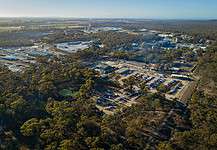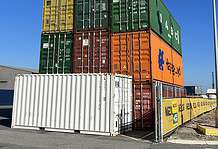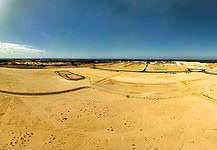Minotaur Exploration executive director business development Tony Belperio. Image: Minotaur Exploration.
MINOTAUR Exploration has already had significant success at its Eloise joint-venture with OZ Minerals 60km southeast of Cloncurry in QLD thanks to its targeting of a relatively unknown style of deposit called Iron Sulphide Copper Gold (ISCG). As drilling continued into the Jericho copper-gold system at the end of 2018, Amy Blom spoke with Minotaur executive director business development Tony Belperio about the benefits of targeting ISCG deposits, recent results from Jericho, and plans to roll out the exploration model elsewhere.
Q. Minotaur Exploration has achieved a breakthrough based on a new deposit style called ISCG. What led to Minotaur’s decision to target this particular style of deposit?
Historically, Minotaur has been exploring for Iron Oxide Copper-Gold (IOCG) deposits, as exemplified by Prominent Hill in South Australia and Ernest Henry in the Cloncurry district, for more than 20 years.
IOCG is a copper-gold deposit style in which the dominant host gangue is iron in the oxide form – magnetite and/or haematite.
About 10 years ago, as part of our exploration effort north of Ernest Henry, our geologists began encountering high iron sulphide (pyrite-pyrrhotite) versions in and around its IOCG targets.
Trialling of various electrical geophysical methodologies allowed us to track this iron sulphide – bearing variant (named Cormorant) for many kilometres – more than 10km – under cover.
It was the realisation that this ISCG system could be as large as, and contain as much iron as, as a typical IOCG system, albeit stretched over many kilometres and responding differently to the exploration tolls being utilised, that lead to the decision to further target this style directly.
Q. What are the processes involved in targeting ISCG and how do they differ from the processes used to target the more commonly known IOCG style of deposit?
The key accepted tools for IOCG exploration under cover are gravity and magnetics.
These respond to the density contrast caused by a large mass of haematite and/or magnetite to its magnetic properties.
The ISCG style is characterised by similarly large quantities of iron, but with the iron in a reduced sulphide form, principally as pyrrhotite.
A key characteristic of pyrrhotite is that it is one of the most electrically conductive of minerals, so that electrical geophysics becomes a key targeting methodology.
In addition, the ISCG style of mineralisation appears to be less magnetic – even non-magnetic – and more tabular, following linear structural weaknesses in the crust compared to diatreme, like breccia bodies of IOCG deposits.
This makes ISCG deposits less likely to be detectable by regional gravity and magnetic methods.
Conversely, the high conductivity of the massive pyrrhotite host makes electrical methods a preferred tool.
In this regard, recent technological advances in electrical geophysical methods, including airborne EM, VTEM, B field EM and Squid EM are an added incentive, particularly where exploring under conductive cover.
Q. What were the results of adopting the ISCG model?
Minotaur made the conscious decision in 2013 to target the Eloise area, surrounding the privately-owned Eloise copper-gold mine as this was the best known commercial example of an ISCG deposit at that time.
The Eloise underground mining operation has extracted more than 10 million tonnes (mt) to date at a grade of 2.2 per cent copper and 0.9 per cent gold.
The greater Eloise area, being under almost complete cover, allowed for both regional screening using airborne EM technologies, where cover was less than 50m, and direct targeting of regional structural conduits using deep penetrating ground EM, where cover thickness was greater.
Each of these technologies proved successful in their own right with successive copper-gold discoveries at Artemis in 2014, Iris in 2016 and Jericho in 2017.
Q. Can you outline the recent results of drilling at Jericho and what they mean for Minotaur?
Jericho was discovered 12 months ago under 50m of cover and just 3km to 5km from the Eloise mine.
With almost no magnetic expression to stimulate interest, the area had been ignored by previous explorers despite its proximity to a well-endowed mining operation.
With 30 broadly separated drill holes now completed into the geophysically-defined target, copper-gold mineralisation has been outline along some 3.5km, J1, and 2km, JT, of strike extent in two sub parallel tabular bodies about 150km apart.
Of significance is that every drill hole to date into the conductive plate targets making up J1 and J2 at Jericho has intersected copper mineralisation.
An accelerated and more systematic drill out is anticipated in the new year, subject to discussion with joint venture partner OZ Minerals, to more formally define scale, grade, continuity, and extend of mineralisation.
Closer spaced tracking of high grade intervals in each of J1 – for example 8.4m at 2.78 copper and 0.66 grams per tonne (g/t) gold, and J2 – 27m at 2.42 per cent copper and 07g/t gold – is anticipated.
Q. How will Minotaur use its model to unlock the potential of other project areas?
Jericho, Iris, Artemis and Cormorant are emphatic proof of concept for the ISCG exploration model.
They demonstrate that the ISCG style of mineralisation can be both large and high-grade, and the ISCG model should be considered in parallel with IOCG models in exploration/
complementary exploration tools need to be considered and utilised.
Minotaur has been and continues to evaluate areas with potential for both styles, the Highlands project area recently acquired being one such region worthy of critical investigation.
Like the Eloise area, Highlands consists of a known pyrrhotite copper-gold deposit, Barbara, and widespread structurally controlled copper-gold occurrences.
Systematic exploration with an appropriate exploration tool box is required.
Q. Any final thoughts?
It has been suggested that Jericho may be the most significant copper-gold discovery in the Cloncurry region since Ernest Henry in 1991.
Although I can’t possibly comment on size and grade, it is clear to me that the ISCG exploration model has evolved rapidly and elegantly, and is now delivering very tangible results, and we expect many more.






















































